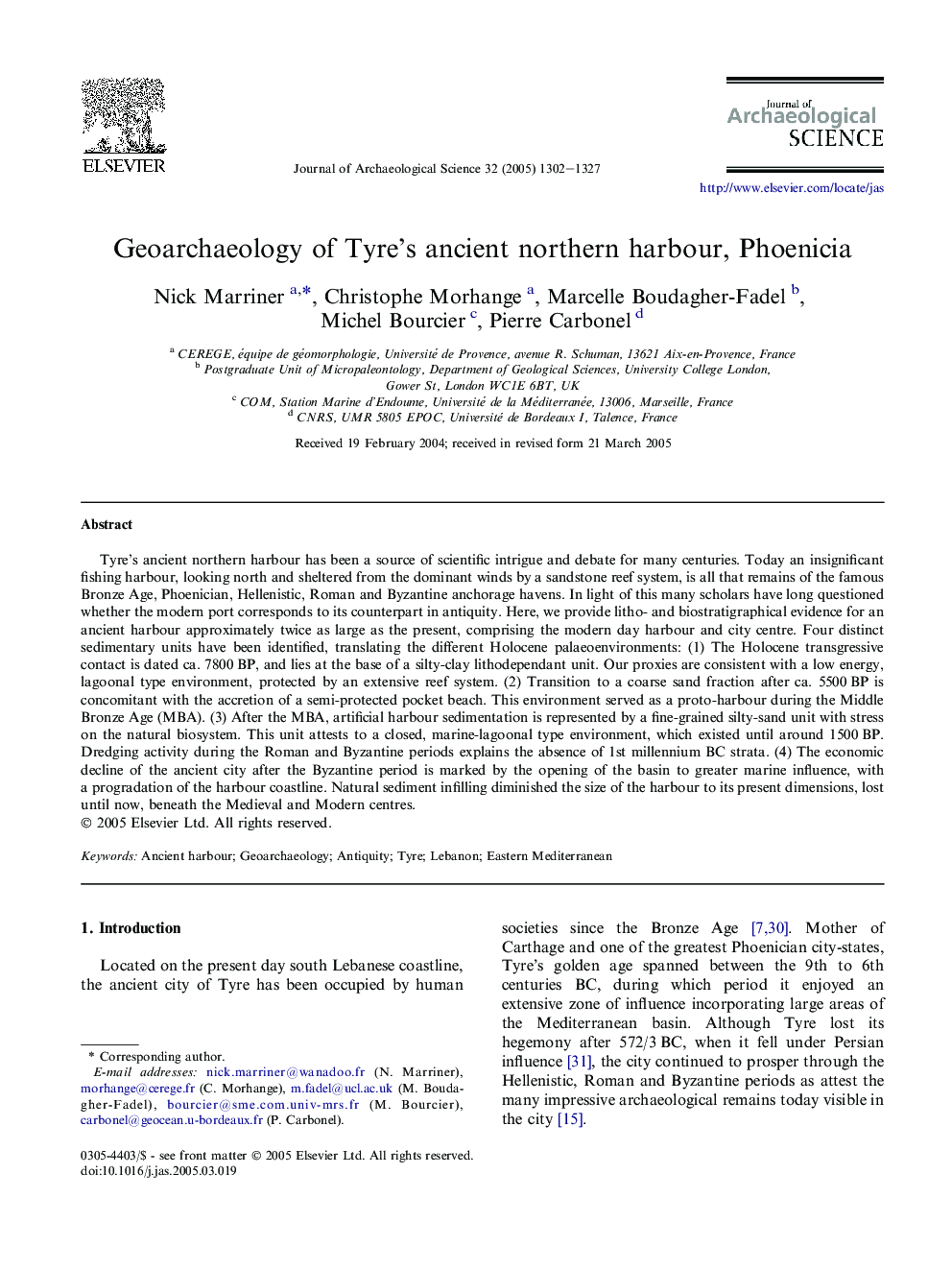| Article ID | Journal | Published Year | Pages | File Type |
|---|---|---|---|---|
| 10499409 | Journal of Archaeological Science | 2005 | 26 Pages |
Abstract
Tyre's ancient northern harbour has been a source of scientific intrigue and debate for many centuries. Today an insignificant fishing harbour, looking north and sheltered from the dominant winds by a sandstone reef system, is all that remains of the famous Bronze Age, Phoenician, Hellenistic, Roman and Byzantine anchorage havens. In light of this many scholars have long questioned whether the modern port corresponds to its counterpart in antiquity. Here, we provide litho- and biostratigraphical evidence for an ancient harbour approximately twice as large as the present, comprising the modern day harbour and city centre. Four distinct sedimentary units have been identified, translating the different Holocene palaeoenvironments: (1) The Holocene transgressive contact is dated ca. 7800Â BP, and lies at the base of a silty-clay lithodependant unit. Our proxies are consistent with a low energy, lagoonal type environment, protected by an extensive reef system. (2) Transition to a coarse sand fraction after ca. 5500Â BP is concomitant with the accretion of a semi-protected pocket beach. This environment served as a proto-harbour during the Middle Bronze Age (MBA). (3) After the MBA, artificial harbour sedimentation is represented by a fine-grained silty-sand unit with stress on the natural biosystem. This unit attests to a closed, marine-lagoonal type environment, which existed until around 1500Â BP. Dredging activity during the Roman and Byzantine periods explains the absence of 1st millennium BC strata. (4) The economic decline of the ancient city after the Byzantine period is marked by the opening of the basin to greater marine influence, with a progradation of the harbour coastline. Natural sediment infilling diminished the size of the harbour to its present dimensions, lost until now, beneath the Medieval and Modern centres.
Related Topics
Physical Sciences and Engineering
Materials Science
Materials Science (General)
Authors
Nick Marriner, Christophe Morhange, Marcelle Boudagher-Fadel, Michel Bourcier, Pierre Carbonel,
